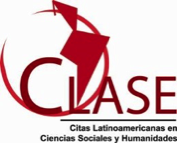Archives of the Commons: Collective Cataloguing in Art Museums
DOI:
https://doi.org/10.30763/Intervencion.225.v1n21.04.2020Abstract
In this article, we argue the need for documentation centers in contemporary art museums to use cataloguing processes, in particular, and information management, in general, to build new audiences and to create communities of sense around their collections. The starting question is how to make catalographic description a channel for collaboration that connects all involved parties: archivists, artists, curators, art critics, activists, researchers, other related professionals, and even visitors, both inside and outside of the museum. Taking the category of conceptual art as a case study, this research analyses the effectiveness of social tagging tools used by standardized cataloguing models.
Downloads
References
Baca, M. y O’Keefe, E. (agosto, 2008). Compartiendo estándares y conocimientos a comienzos del siglo XXI: hacia un modelo cooperativo e “intercomunitario” de creación de metadatos. Trabajo presentado en el 74th IFLA General Conference and Council, Quebec, Canadá.
Baca, M. y Sherman, C. (2007). FRBR and Works of Art, Architecture, and Material Culture. En A. G. Taylor, Understanding FRBR (pp. 103-110). Westport, CT: Libraries Unlimited.
Baca, M. (2006). Cataloging cultural objects and cdwa lite: New data content and data format standards for art and material culture information. Digitalia. Rivista dei digitale nei beni culturali, 1, 45-55.
Bal, M. (2009). Conceptos viajeros en las humanidades. Una guía de viaje. Murcia: Centro de Documentación y Estudios Avanzados de Arte Contemporáneo. (Cendeac).
Barriendos, J. (2009). El museo de arte como archivo global. Papel Máquina. Revista de Cultura, 2(3), 91-104.
Benardou, A., Champion, E., Dallas, C. y Hughes, L. (Eds.). (2017). Cultural Heritage Infrastructures in Digital Humanities (Digital Research in the Arts and Humanities). Londres: Routledge.
Buntinx, G. (2006). Communities of sense/Communities of sentiment: Globalization and the museum void in an extreme periphery. En I. Karp, C. Kratz, L. Szwaja y T. Ybarra-Frausto (Eds.), Museum Frictions: Public Cultures/Global Transformations (pp. 220-246). Carolina del Norte: Duke University Press.
Carnevale, G., Expósito, M., Mesquita, A. y Vindel, J. (2015). Desinventario. Esquirlas de Tucumán Arde en el archivo de Graciela Carnevale. Madrid: Ocho Libros-Museo Nacional Centro de Arte Reina Sofía.
Gómez-Moya, C. (2010). Archivo universal, visualidad y metadatos: Una introducción sobre accesos públicos en el ámbito de la circulación digital. En C. Gómez-Moya y J. Barriendos, Repensar las políticas de archivo en los museos de América Latina y el Caribe. Informe preparado por la plataforma Archivos/Museos/Modernidades de la Red Conceptualismos del
Sur, Madrid: Museo Nacional Centro de Arte Reina Sofía.
Harpring, P. (2010). Introduction to Controlled Vocabularies. Terminology for Art, Architecture, and Other Cultural Works. Los Ángeles: Getty Research Institute.
Hinderliter, B., Kaisen, W., Maimon V., Mansoor J. y McCormick, S. (Eds.). (2009). Communities of Sense. Rethinking Aesthetics and Politics. Carolina del Norte: Duke University Press.
Lanzi, E. (2010). Work of Art en Encyclopedia of Library and Information Science. Londres: Taylor & Francis.
Peters, I. (2009). Folksonomies: Indexing and Retrieval in Web 2.0. Berlín: Gruyter.
Ramírez, M. C. (2012). Critical documents of 20th-century Latin American and Latino art. En M. C. Ramírez, T. Ybarra-Frausto, H. Olea (Eds.), Resisting Categories. Latin American And/or Latino? (pp. 27-32). Houston: Museum of Fine Arts of Houston.
Tillett, B. B. (2003). The FRBR Model (Functional Requirements for Bibliographic Records). Ponencia presentada en el Workshop Authority Control among Chinese, Korean and Japanese Languages (CJK Authority3). Marzo 14-18, 2002, Karuizawa, Tokyo, Kyoto. Recuperado de https://www.nii.ac.jp/publications/CJK-WS/cjk3-07a.pdf
Additional Files
Published
How to Cite
Issue
Section
License
Copyright (c) 2020 Instituto Nacional de Antropología e Historia (INAH)

This work is licensed under a Creative Commons Attribution-NonCommercial 4.0 International License.

Atribución-NoComercial 4.0 Internacional
https://creativecommons.org/licenses/by-nc/4.0/deed.es
Usted es libre de:
- Compartir — copiar y redistribuir el material en cualquier medio o formato
- Adaptar — remezclar, transformar y construir a partir del material
Bajo los siguientes términos:
-
Atribución — Usted debe dar crédito de manera adecuada, brindar un enlace a la licencia, e indicar si se han realizado cambios. Puede hacerlo en cualquier forma razonable, pero no de forma tal que sugiera que usted o su uso tienen el apoyo de la licenciante.
-
No Comercial — Usted no puede hacer uso del material con propósitos comerciales.




















